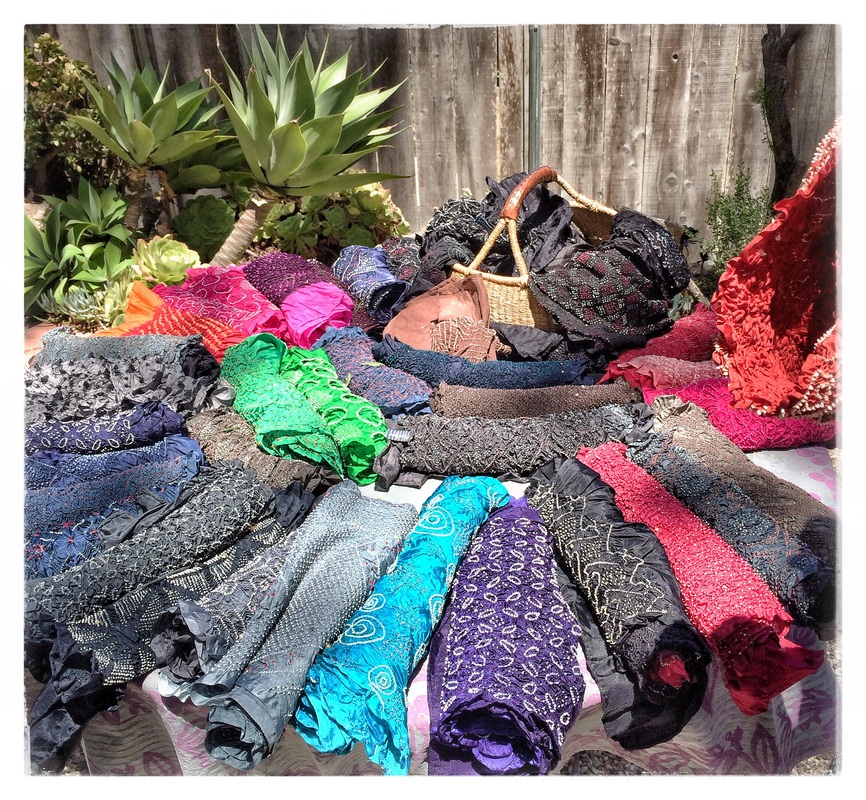Bhandini is one of the oldest forms of surface embellishment done on textiles with references dating back to the Jain Manuscripts. The meticulous process is created mainly by the Khatri artisans. I was introduced to this meticulous process through a traditional chitarnar (artist / designer) who draws the patterns on the fabric — sometimes floral, abstracted circles and zig-zags, figures, animals, birds or trees. The chitamar I was introduced to works with about 300 women and men to produce her exquisite designs.
The fabric is speckled with tiny square-shaped dots (bindi) typically done by women knotters (bandnari), who tediously pinch and resist tie the silk with thin threads before it is dyed.
Customarily, the dyeing is done by men — ranganaar or dyer — who dye the textile pieces in either natural vegetable or man-made dyes. Their proficiency is seen in the hues and balanced blending of color that is radiated from the material.
Shibori is another tie and dye method that creates pattern by binding, stitching, folding, twisting or compressing cloth. The method is generally determined by the characteristics of the cloth used.
The gorgeous scarves and shawls shown in a trunk show were from the region of Gujarat, which is renowned for its textiles. Though hard to decide because the colors are so sumptuous, I finally decided on two natural pigmented scarves — one to be a gift. Mine was dyed using purpurin, which is only present in the natural form of madder and imparts an orange/red tone. The other was dyed using indigo.


 RSS Feed
RSS Feed